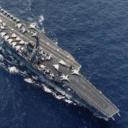Yahoo Answers is shutting down on May 4th, 2021 (Eastern Time) and beginning April 20th, 2021 (Eastern Time) the Yahoo Answers website will be in read-only mode. There will be no changes to other Yahoo properties or services, or your Yahoo account. You can find more information about the Yahoo Answers shutdown and how to download your data on this help page.
Trending News
Why doesn't carbonation leave beverages en masse?
Oh, the things you think about whilst drinking beer...
When open or dispensed, why doesn't the CO2 that is in solution in your favorite carbonated beverage all immediately escape with the sudden decrease in pressure? How is it that the bubbles slowly form for upwards of 20 minutes or more? Logic dictates that there should be an immediate rush of CO2 escaping, then a rapidly diminishing flurry of bubbles... and nothing after 30 seconds or so.
Help a guy out on this one, please?
2 Answers
- CV59StormVetLv 51 decade agoFavorite Answer
Howdy Master Chief! So strange that you should ask this the day after I watched a program on the History Channel about how they make carbonated beverages (water and flavored syrup) through a soda fountain! Basically, the CO2 is mixed with water in a pressurized tank (pressurized to 105 psi) the moment that the lever is pressed on the soda fountain. Now we all learned in basic chemistry that a gas and a liquid cannot be mixed, ...at least not in the correct sense of the word at normal atmospheric pressures. But because of the intense pressure in the tank, this miracle of culinary concoction becomes reality! At the same moment, syrup is released from the syrup tank and the two pressurized lines converge at the soda head where the carbonated water mixes with the flavored syrup to produce the desired soft drink. Now, ...to answer your question, the CO2, because it has returned to normal atmospheric pressure, begins to release from the water in the form of bubbles. To be honest, they didn't say why it didn't all release at once but I gathered it had something to do with atmospheric pressure. When it's mixed at 105psi, that's more than 7 atmospheres (7 times the normal atmospheric pressure as measure at sea level), causing the gas molecules to reshape and actually mix with the water molecules (which is actually supposed to be impossible, according to chemistry). I sat there and wondered who were the guys who were sitting around drinking flat Coca-Cola that invented this little system? I guess necessity is truly the mother of all invention, eh?
Source(s): Retired Chief Petty Officer, U.S. Navy, 1981-2002 proud veteran of the Persian Gulf War - Anonymous1 decade ago
You mean, help a ranting geriatric out on this one? Nah, it's funnier watching you try and help yourself dick.head


